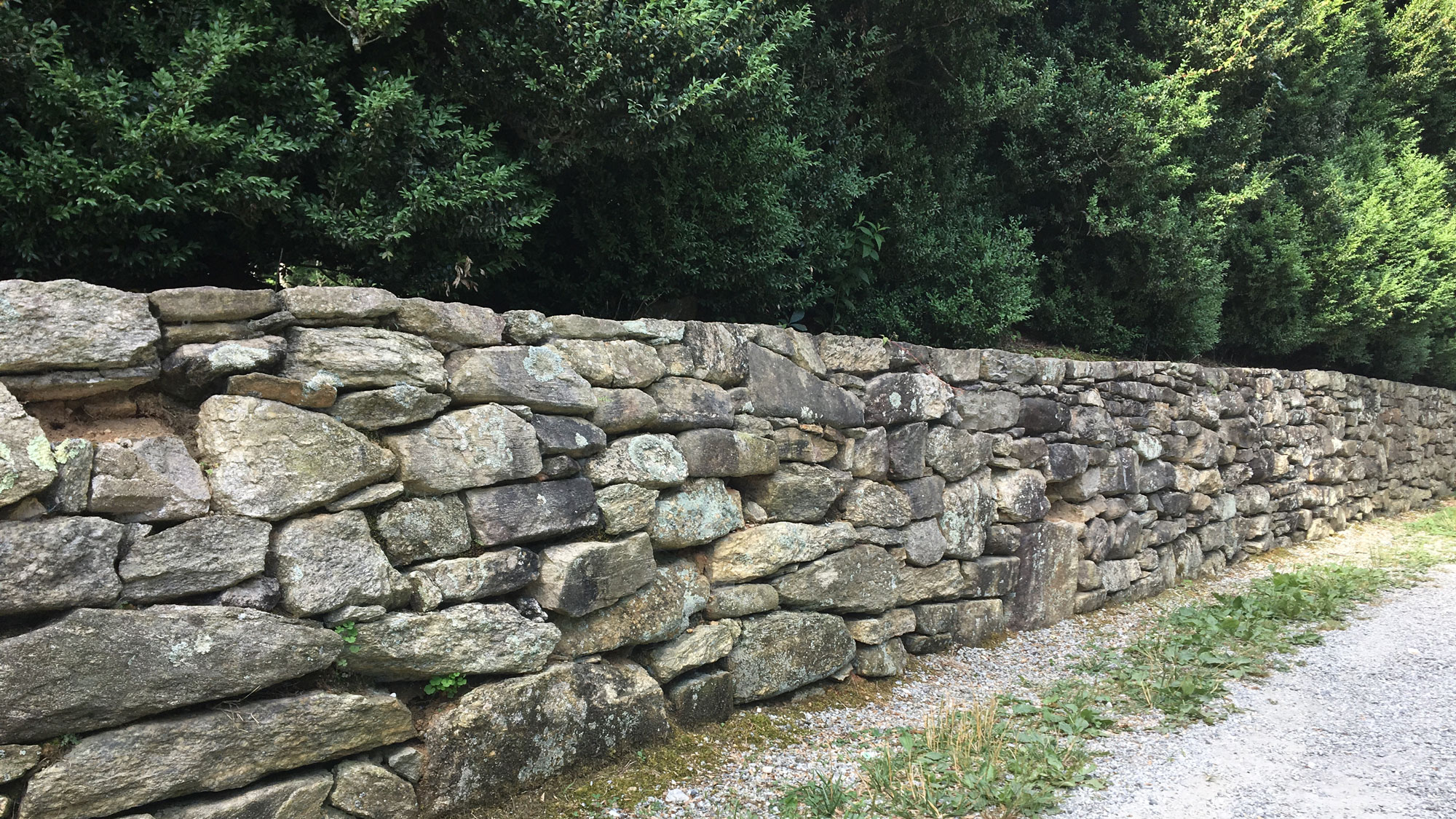Colonel John Davis: At the Nexus of History
/DAvis Family Cemetery
Just south of Flat Rock in the Green River Valley is a small family cemetery tucked out of sight and largely forgotten by both family and history. In the center of the ancient graveyard stands an obelisk marking the final resting place of one of Flat Rock’s earliest settlers. A man who by deed and by fate found himself at the center of much of the region’s most significant early history. A largely unsung figure who found himself at the nexus of Flat Rock’s origin story and some of the most significant moments in its early history.
John Davis was by turn a pioneer, entrepreneur, and civic leader in western North Carolina during the first half of the 19th century. Over the course of his life he would fight alongside a future president of the United States, purchase and sell the land that would become one of the largest estates in Flat Rock, have the occasion to meet future American legend Davey Crockett, play an instrumental role in the establishment of the town of Hendersonville, and even after his death, play a role in the creation of one of only two kingdoms to exist in the history of the United States.
The following account of his long and fascinating life is taken from a variety of well-known sources including Jennie Giles, Terry Ruscin, and Sadie Smathers Patton. A full list of references with links follows this account.
Early Life
John Davis was born in Virginia in 1780 to parents who had emigrated to the colonies from Wales. He went on to serve in the US Army and fought alongside future United States President General Andrew Jackson at the Battle of New Orleans during the War of 1812.
Following the war, he spent time in Alabama and Tennessee before finding his way to Merritsville, South Carolina. It was there he met and married Serepta Merritt.
Serepta Merritt Davis, Wife of John Davis
Merrittsville benefited from the completion of the final section of the old State Road in 1820 from Charleston to North Carolina and the settlement’s economy shifted to welcome a stream of drovers herding geese, turkeys, hogs, cattle and other livestock. The early settlers now had a much better way of traveling through the mountains to pass through Greenville on their way to Columbia and Charleston markets.
Davis involved himself in agricultural and mercantile enterprises and established a trading post to take advantage of the burgeoning economy.
Move to Flat Rock
Within a few years, the couple traveled up the “Winding Stairs” through the Saluda Gap on the old road and Indian trail (Buncombe Turnpike), which connected Greenville, S.C., with Asheville, to the area of Flat Rock, where they also ran an inn during the 1820s.
By 1829, Davis was prominent and respected enough in the community to be appointed the first postmaster of the new Flat Rock Post Office.
UNC LIBRARIES COMMONS: "ARGYLE" FLAT ROCK, N.C.DURWOOD BARBOUR COLLECTION OF NORTH CAROLINA POSTCARDS
In 1830, Davis sold 1390 acres of land to Charlestonian Judge Mitchell King, to serve as King’s summer home. The land deed dated October 12, 1830 states that the purchase included Davis’s house, offices, sawmills and all other dwellings and improvements. Judge King then built one of Flat Rock’s earliest and most famous homes, Argyle, with the original Davis home serving as the core of the much grander house
Davis and Serepta moved back down the mountain to the Green River community where Davis had purchased 900 acres of land just north of the North Carolina/South Carolina state line.
Oakland
Davis and Serepta built a new home they called Oakland to honor the large oaks surrounding the property. It was there they would raise their 10 children. Oakland was a substantial brick home within a short distance of the old Indian path known as the Saluda Path. The path served as a wagon road and eventually became part of the Buncombe Turnpike by 1828.
Davis’s influence in the region continued to grow:
“After he came to Flat Rock and later at his home at Oakland, Davis became an influential man in Western North Carolina and soon people were addressing him as colonel,” storyteller Frank Fitzsimons wrote. “He bore this title the rest of his life.” (Giles)
The couple also opened their home to travelers making the arduous journey up and down the Saluda Grade.
John and Serepta opened an inn and stagecoach stop at Oakland which would become a vital rest stop for weary travelers. The Davises were always willing to offer food and shelter to neighbors and strangers…anyone in need would find help at Oakland. (Southern Mysteries)
Oakland soon became known for its gracious and generous hospitality:
The home, described as having a dining room table that “groaned with its load of good things to eat, prepared by Mother Davis,” sported “spacious rooms furnished with four-poster beds and snowy sheets.” (Ruscin)
Vance-Carson Duel
It was near Oakland that a famous duel occurred between two disgruntled politicians (who one could imagine would find themselves right at home in our present-day Congress.) One of the witnesses to the duel would become a legendary American frontiersman.
“On Nov. 5, 1827, Robert B. Vance, former N.C. congressman, was fatally wounded in a duel by Samuel P. Carson, his successor in Congress. One of the witnesses to the duel was Davy Crockett, the famous frontiersman, member of Congress and casualty at the Alamo.
“A rude type of litter was hurriedly made and Vance was carried down the mountain to Oakland, a short distance away,” Fitzsimons wrote. It was at Oakland that Vance died”. (Giles)
Later in his life, Carson helped establish the Republic of Texas where he was appointed Texas’s Secretary of State. A complete account of the deadly duel can be found here.
Establishment of Hendersonville as County Seat
Davis’s influence in the region continued to expand and he was instrumental in the establishment of Hendersonville. Reports are that he convinced Judge King to give 50 acres upon which Hendersonville was built. He also campaigned in his role as chairman of the “Road Party” to have the new city designated as the seat of Henderson County government:
“If it had not been for the votes of 109 people, Horse Shoe would have been the county seat instead of Hendersonville. When Henderson County was created in 1837 there was no town in which to place the county courthouse. At this time in our county’s history, much of today’s Transylvania County was within Henderson County. This would place the center of the county near the “great bend” (Horseshoe) in the river.
But, other folks wanted the county seat closer to the main transportation route at this time. This was the area of the Old Buncombe Turnpike. This controversy resulted in people choosing sides: the River Party and the Road Party. The controversy lasted from 1838 to 1841.
In 1841 a referendum election was held to determine the placement of the new town and the county seat. The Road Party won by 463 to 354 votes. Appeals were filed by leaders of the River Party. The court case went all the way to the N.C. Supreme Court. The court upheld the election results.” (Giles)
In 1839, Davis was also appointed to a committee of five to survey and sell building lots in Hendersonville.
Kingdom of the Happy Land
“Only two kingdoms have existed in the United States. In 1893, the indigenous monarchy of the Pacific Kingdom of Hawaii was overthrown in a coup led by Americans and the archipelago was annexed by the U.S. in 1898. But Hawaii was not the only kingdom in what is now the United States of America.
The second kingdom existed in our own Green River Township, Henderson County, North Carolina, and was settled in the latter part of the nineteenth century." (Ruscin)
Davis died in 1859 but his impact on the shape of local history did not end with his earthly demise. During his lifetime, he and Serepta operated Oakland as a plantation and had cabins on their property to house the enslaved persons who maintained the property and worked the land.
After Davis’s death, Serepta and her son Tom inherited Oakland and 200 acres of land. With the advent of the Civil War in 1861 and the subsequent emancipation of enslaved persons, maintaining Oakland became increasingly difficult for the widow and her son. Further, most of her possessions and livestock had been plundered by passing Union and Confederate troops.
“An aging Serepta Davis was struggling to survive. She and her son earned what little money they could by opening up rooms in the home for travelers willing to pay to stay in a run-down Oakland.
You can imagine her surprise when a group of emancipated slaves appeared on her property and the men who were entrusted to speak for the group, brothers Robert and William Montgomery, knocked on her door.
The men explained where they had come from, how they had heard of a road that would take them to a beautiful area that could be their promised land.” (Southern Mysteries)
The Montgomery brothers soon realized that the hardship facing Serepta was an opportunity to forge a partnership beneficial to all parties concerned. The brothers suggested that they could help with upkeep of the property in exchange for shelter in the former slave quarters. Serepta agreed and the group led by the Montgomerys settled at Oakland. Word of the unusual agreement spread and more and more people were drawn to the place being called Happy Land.
The Montgomerys and the new settlers set about repairing Oakland and returning it to its status as a respected inn. The repairs helped and more people began staying at Oakland during the summer and fall months.
“The agreement the Montgomerys made with Serepta was ideal for the group because it allowed them to find work in the surrounding communities as they rotated labor at Oakland. Each new job meant they were able to make and save a little money and that money helped them fulfill their dream for a kingdom.
Within a few years, the group pooled their money and purchased an estimated 180 acres from Serepta for $1 an acre.
The land they worked for and purchased became the foundation for their new community where they built cabins and set about establishing The Kingdom of the Happy Land. “ (Southern Mysteries)
Conclusion
John and Serepta Davis are perhaps not the most famous early residents of Flat Rock. Their names have been largely obscured by the many accounts of more prominent early residents such as the Kings, Barings, Memmingers, Rutledges, Trenholms, et al. They were, however, at the heart of much of this area’s most important and interesting early history.
Sources:
HendersonHeritage.com. Davis Family Cemetery, Jennie Giles.
Beyond the Banks. Henderson County’s Storied Kingdom, Hendersonville Times News. Terry Ruscin
Old Buncombe County Genealogical Society, Vance-Carson Duel
SouthernMysteries.com. The Kingdom of the Happy Land.









